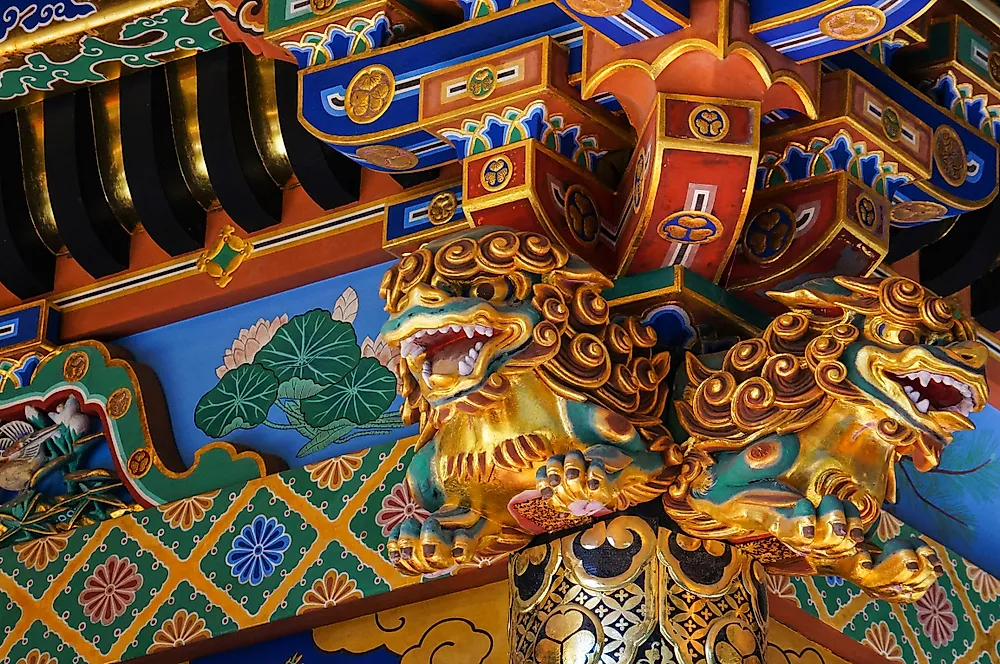Religious Beliefs In Japan

Shintoism is a unique indigenous religion from Japan. Most who practice Shintoism worship at shrines and to kami without belonging to an actual organized Shinto organization. Folk or unorganized Shintoism as no formal rituals to become a member. Currently, there are around 100,000 Shinto shrines and 79,000 priests in the country.
Buddhism
Buddhism arrived in Japan at some point around the middle of the 16th Century, having come to Japan from the Kingdom of Baekje (18 BC-660 AD) on the Korean Peninsula. Within a few decades, the religion was increasingly accepted in Japan after overcoming violent opposition from conservative forces in the country. It was also around this time that Japan experienced immigration from Korea, as well as cultural influence from China, which influenced Buddhism in Japan since it was a important religion in both those countries. It was due to these reasons that the Yamato state of Japan (~250-710 AD) started to construct Buddhist temples at the capital of Nara which led to what is known today as Nara Buddhism in Japan. In 794 the capital had moved to the city of Helan, now known as Kyoto, and it was during this time that more branches of Buddhism, Shingon Buddhism and Tendai Buddhism, came to Japan.
Irreligion
Japan almost always ranks as one of the most highly irreligious countries in the world. This, however, is difficult to quantify in cultures in East Asia, including Japan, due to the fact that they tend to define religion differently, have a history of more syncretic mixing of various religious beliefs and the fact that some see their beliefs as more of custom and culture than religion. In Japan, it is also harder to classify due to the fact that a lot of the people incorporate practices from multiple religions into their lives and are religious without belonging to any religious organization.
Structured Shintoism
Structured Shintoism is relatively new to Japan, as for most of its history Shintoism was an unorganized folk religion. There are thirteen different sects of Sect Shinto that are organized into the different groups of pure Shinto sects, Confucian sects, mountain worship sects, purification sects, and faith-healing sects. Currently, structured Shintoism makes up a small minority of overall Shintoism in Japan.
Christianity
Christianity first came to Japan in 1549, six years after Portuguese traders had become active in the country, That year three Jesuit Catholic missionaries, Francis Xavier, Cosme de Torres and Juan Fernández, landed in the city of Kagoshima. These missions succeeded in converting many people and over the next few decades the number of Christians grew rapidly, with churches being built and local lords who had accepted the religion forcing other to adopt it. Towards the end of the 16th Century, Toyotomi Hideyohsi (1536/37-1598) banned the religion and in 1597 executed 26 Franciscans as a warning to take his new more serious edict on banning the religion seriously. Shortly after Hideyoshi's death his Tokugawa Ieyasu (1543-1616) would seize power in Japan and become Shogun and he and his successors kept the ban on Christianity in place. In 1873 shortly after the Meiji Restoration, the ban was dismissed and today around 2.3% of Japan's population is Christian, with most living in the western area of the country where the religion originally started in the country.
Religious Beliefs In Japan
| Rank | Belief System | Share of Japanese Population |
|---|---|---|
| 1 | Folk or Unorganized Shintoism | 41.5% |
| 2 | Buddhism or Combined Buddhism-Shintoism | 34.9% |
| 3 | Atheist or Agnostic | 13.3% |
| 4 | Structured Shintoism | 4.0% |
| 5 | Christianity | 2.3% |
| Folk Religion, Hinduism, Jainism, and Other Beliefs | 4.0% |











